In bustling Châtelet, surrounded by the paths of tourists and locals alike, stands the Tour Saint-Jacques (Saint-Jacques Tower). Surprisingly, despite its towering silhouette, many remain unaware not only of its rich history, which includes a connection to the alchemist Nicolas Flamel, but also, of the simple fact that it’s open for visits.
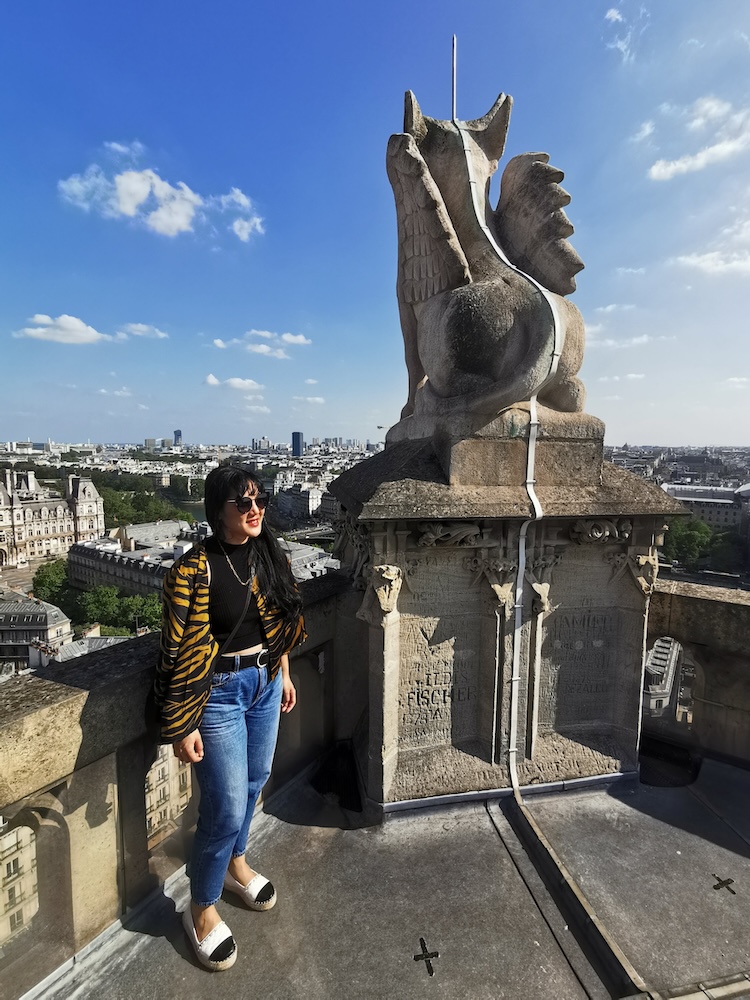
On a bright summer day, I had the pleasure of ascending this hidden stairway to heaven, and the experience was nothing short of breathtaking. Its central position offers an unparalleled 360-degree view over the entirety of Paris, making it an exceptional vantage point. More interestingly, beyond its 300 steps, the tower gave me the opportunity to delve into the story of a legendary Parisian figure (one that Harry Potter fans certainly know): Nicolas Flamel, the most famous of alchemists.
Tour Saint-Jacques: an Architectural Curiousity
The Tour Saint-Jacques is often overlooked by tourists and Parisians alike. It seems to have been standing there as long as the city itself, often eclipsed by other central Paris monuments like the Louvre, Bourse du Commerce, and even Les Halles. Yet, travelers who have the curiosity to book a visit to the tower will uncover with their guides a treasure trove of architectural anecdotes shedding light on Paris’s history.
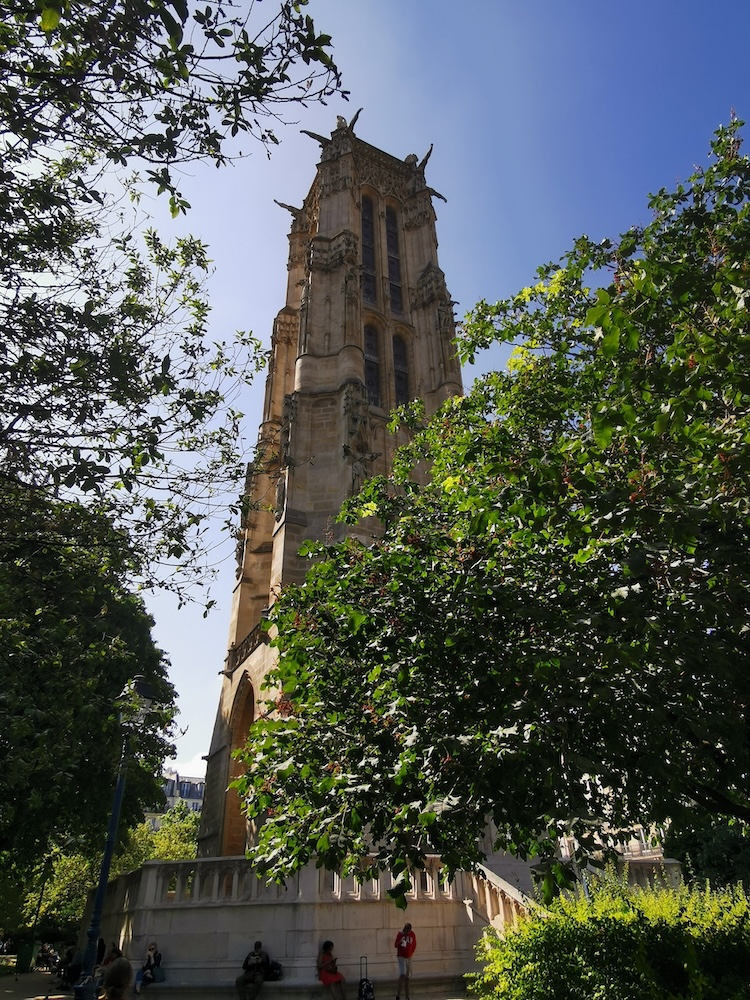
The tower is a unique example of Flamboyant Gothic architecture in the center of Paris. Reconstructed in the 16th century, its design somewhat contradicts the architectural trends of its era. While many were leaning towards inspirations from Antiquity at the time, the tower held onto its Gothic roots, showcasing either a conservative choice or respect for the architectural legacy of the church.
Indeed, the tower is the only remnant of a church, the original Saint-Jacques-de-la-Boucherie (Saint Jacques of the Butchery), owing its name and function to the foundation of a chapel by the Confederation of Butchers in the 12th century. The main body of the church disappeared towards the end of the 18th century when it was destroyed, and its stones sold.
The Gothic style was preserved by architect Theodore Ballu, who led the restoration of the tower in 1855. He employed many sculptors to restore the tower’s ancient prestige, notably through intricate alcoves sheltering statues of saints but mostly through the gargoyles and chimeras jutting from the walls.
I’ve always found these monsters fascinating. They are supposed to symbolize the evil contained in temptation and our own unsatisfied human desires, embodied by monstrosities and thus left outside of the church. Throughout your visit, you’ll have the chance to see some of their original molds inside the tower, kept as tokens of the tower’s restoration, but also the real ones up close on the roof of the tower.
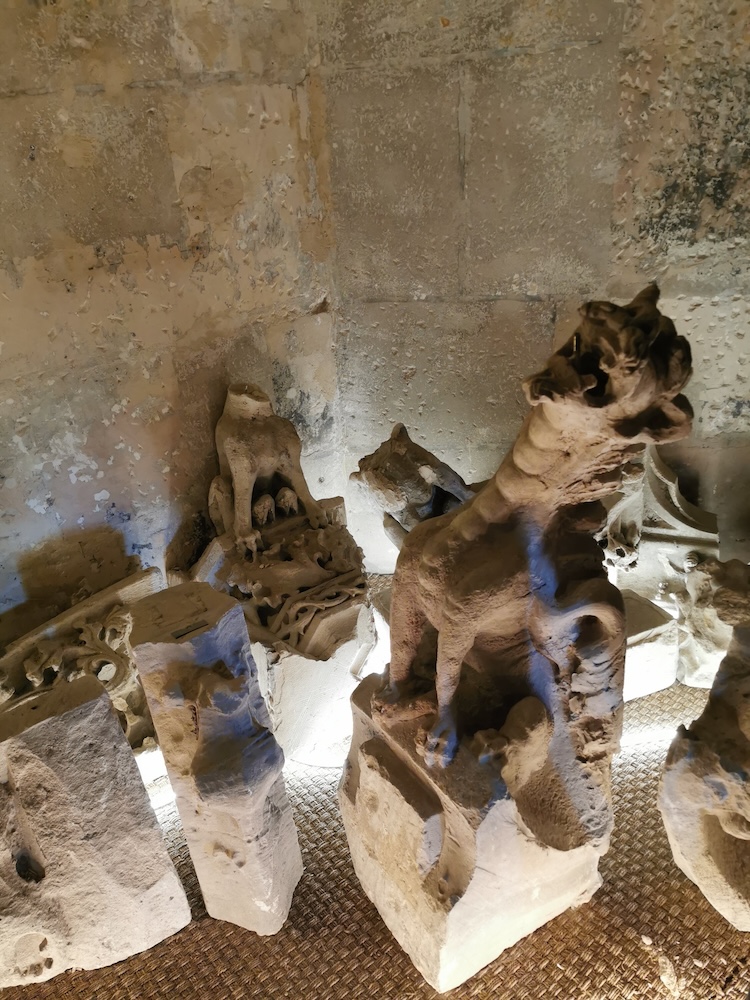
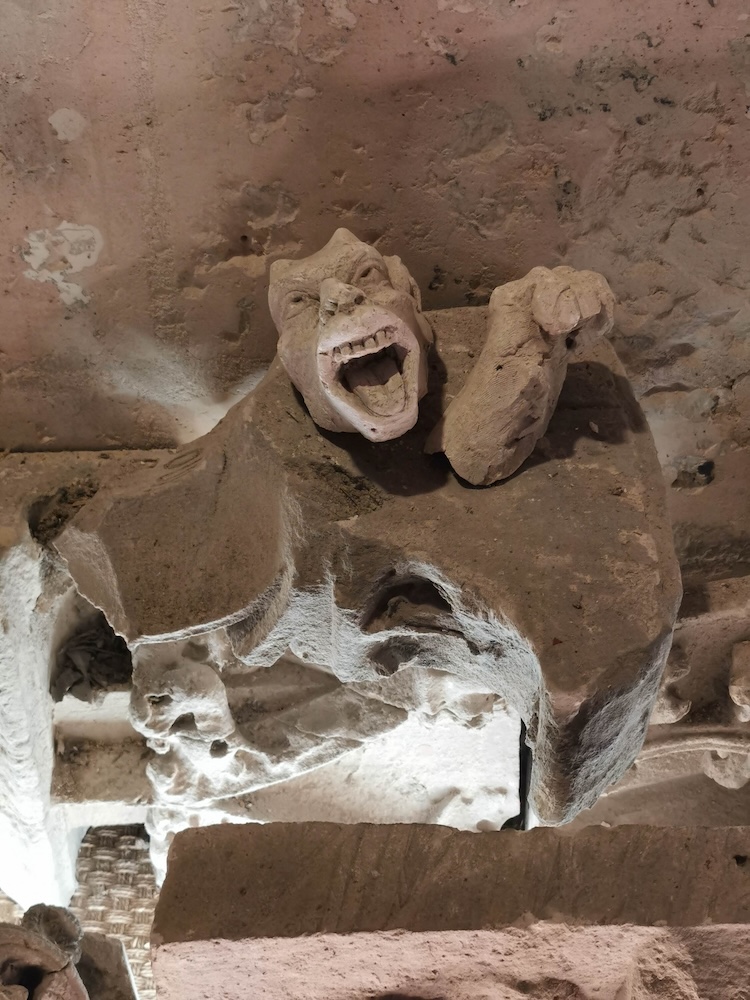
The science behind the Tour Saint Jacques
Although Theodore Ballu was quite a figure in his time, his name is not the most famous attached to the Tour Saint-Jacques. The tower has also been a hub for scientific explorations. The famous French mathematician, Blaise Pascal, is said to have once used this very site for his experiments. That’s why a statue of him stands on the pedestal at the bottom of the tower. It is said that he used the site to conduct tests proving the existence of the void (admittedly, I’m not well-informed on this experiment, so I’ll leave you to do your own research on this one!).


When you ascend the tower during your guided tour, you’ll also discover what remains of an old weather forecast station used until the 1990s as an annex of the Montsouris station. Perched 25 meters above the ground in a room of about 30 square meters, this space resembles a movie set. With old bottles of chemicals left on abandoned shelves, this surprisingly modern platform serves as a reminder of the tower’s multifaceted history, bridging the past with the present in an unexpected way!
Nicolas Flamel & Tour Saint-Jacques: The Alchemist’s Connection
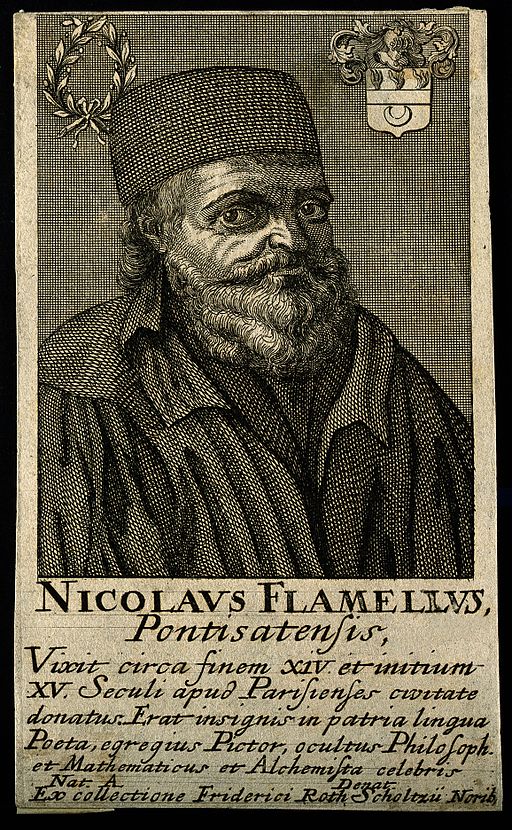
Another intriguing facet of Tour Saint-Jacques is its stained-glass windows connected to Nicolas Flamel. Known as a scribe and often associated with alchemical legends, his association with the tower brings a mystical touch to its history. But what does the alchemist really have to do with the tower?
Nicolas Flamel began his career in Paris as a copyist and public writer in a small shop adjacent to the church of Saint-Jacques-la-Boucherie. His career, marriage to Pernelle, a well-off widow, and his real estate speculations amassed him a comfortable fortune. He dedicated his money to charitable works, among which the construction of the portal of Saint-Jacques-de-la-Boucherie, hence the initials on the edifice.
His fortune, amassed during challenging times (following the Black Plague and amidst the context of the Hundred Years’ War), was amplified by rumors, leading to the myth that made him an alchemist who had succeeded in the quest for the Philosopher’s Stone, capable of transmuting metals into gold. This title of alchemist was acquired partly by chance, rumors, and the phenomenon of pseudepigrapha (falsely attributed works or texts whose claimed author is not the real author). In reality – and to the disappointment of those, including myself, who wish to believe he was a real sorcerer – the most famous “alchemist” never actually practiced alchemy.
Nevertheless, Flamel did live in the area and contributed to the construction of the Tour Saint-Jacques. His official house (“Maison de Nicolas Flamel”), which he commissioned (but may never have lived in, yet another myth around his character), and the street named after him, are located just a stone’s throw away. The legend lives on, entwining his story with the history of this remarkable tower.

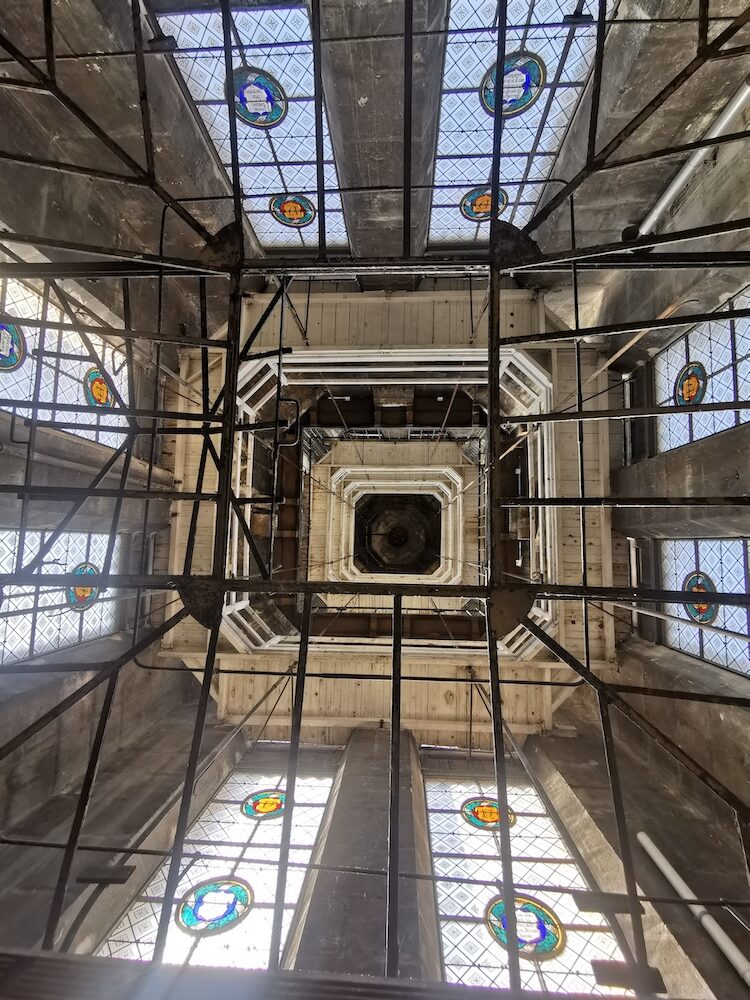
How to visit the Tour Saint-Jacques: practical information
When to visit the Tour Saint-Jacques?
The tour Saint-Jacques is open for visits from May to November, but it’s generally better to visit on days with clear skies, to enjoy the panoramic view offered from the top. The visit lasts about an hour and it is recommended to wear good shoes since you’re going to ascend about 300 steps. Unfortunately, this is not accessible to people with reduced mobility.
How to book your tickets to Tour Saint-Jacques?
It’s really recommended to book in advance as only small groups are allowed. You can book your tickets through the website: http://boutique.toursaintjacques.fr/
French-speaking readers might enjoy this article about 7 things you did not know about the Tour Saint-Jacques.



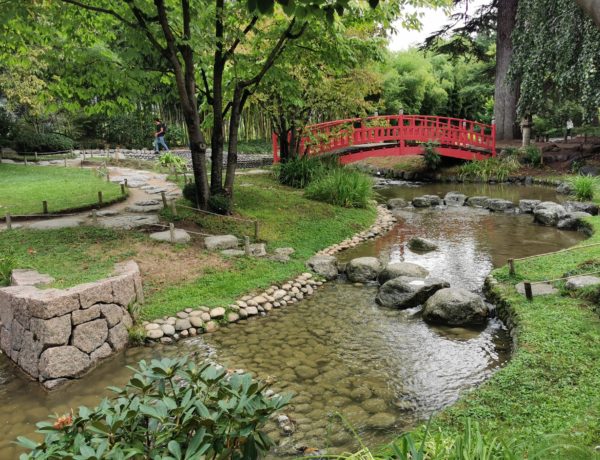
No Comments